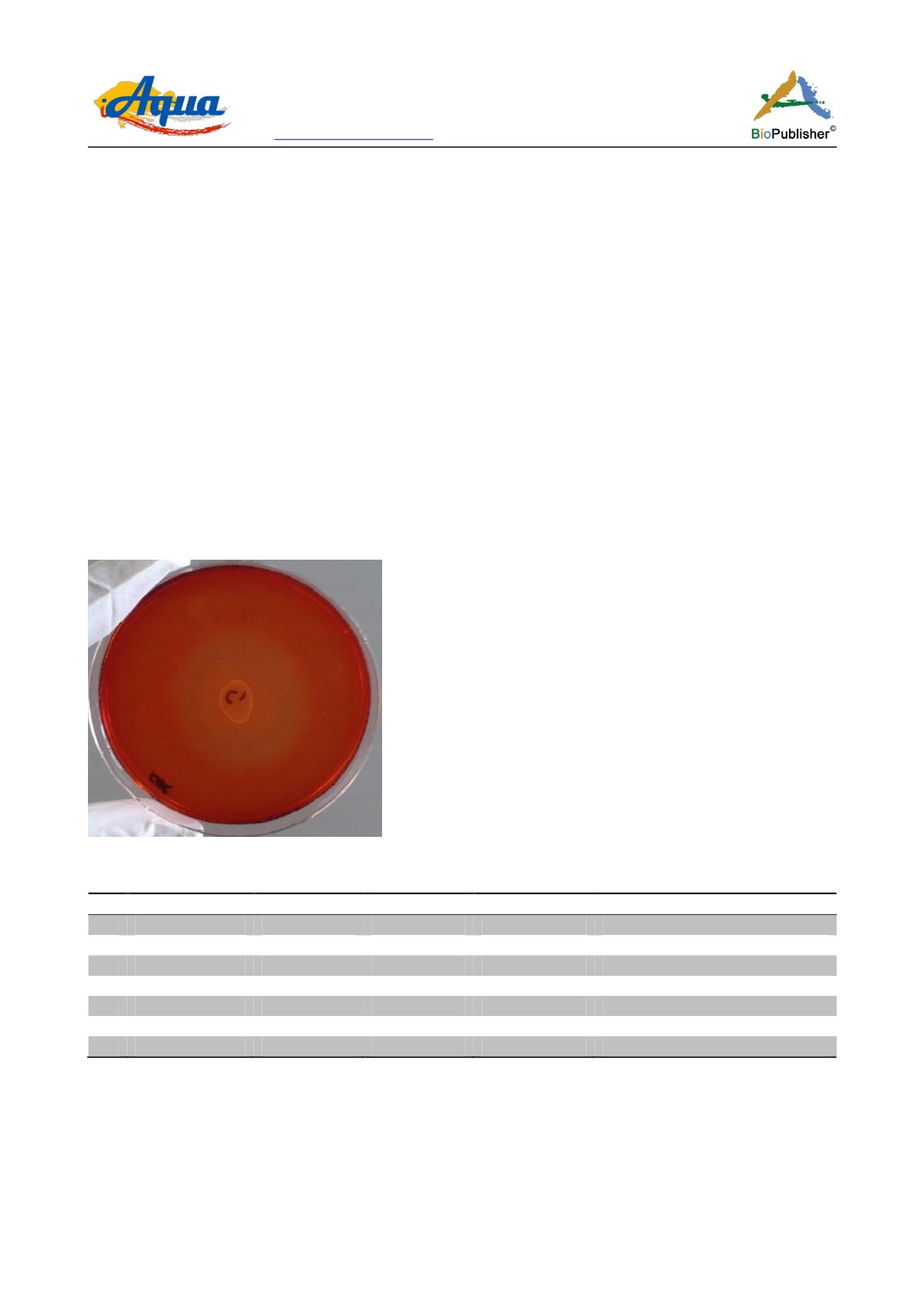
International Journal of Aquaculture, 2016, Vol.6, No.10, 1
-
9
2
improve food digestibility as well as the growth of cultivated species. Verschuere et al. (2000) described that
probiotic bacteria should be viable in order to give significant contribution to animal hosts. Therefore, Fjellheim et
al. (2010) suggested that probiotic bacteria for aquaculture species should be isolated from aquaculture animals.
These bacteria are presumed to be well adapted to the targeted ecological niche and may have greater chance of
colonizing their new host and contribute in food digestions.
Thus, this study aimed at isolation and characterization of bacteria with cellulolytic activity from the
gastrointestinal tract of hybrid abalone as probiotic candidates. In addition; the capacity of cellulose - degrading
bacteria to tolerate seawater and to adapt to the gastrointestinal tract environment of aquatic species was further
investigated. The result of this study is expected to give a contribution to develop cheaper diet ingredients such as
plant - based diets as alternative replacement of high-priced fish meal in formulated feed.
1 Result
1.1 Cellulose - degrading bacteria
A total of 15 bacterial isolates were initially isolated and purified from the enrichment culture method using the
CMC broth medium. Of these, only 7 isolates were confirmed to have cellulolytic activity, indicated by a
discoloration of Congo - red agar (Figure 1). Phenotypic studies showed that all isolates were catalase positive,
and under microscope appeared to be rod. Most isolates were gram-positive (6/7) and (4/7) were able to produce
oxidase (Table 1).
Figure 1 A discoloration of CMC Congo - red agar indicating cellulolytic activity
Table 1 Phenotypic characteristics of cellulose - degrading bacteria isolated from GIT of hybrid abalone
No
Bacterial isolate
Gram staining
Oxidase
Catalase
Cell Morphology and Arrangement
1
C -1
+
-
+
Rod, chain
2
C -2
-
-
+
Rod, pair
3
C - aw1
+
-
+
Rod, pair
4
C - aw2
+
+
+
Rod, chain
5
C - aw4
+
+
+ (w)
Rod, pair
6
C - as4
+
+
+
Rod, chain
7
C - ab6
+
+
+
Rod, chain
Note: W = weak
1.2 Cellulolytic activity and bacterial identification
Quantitative assay indicated that there was a significant difference in the amount of reducing sugar among the
seven bacterial isolates, F = 86.37; df 7, 10; p = < 0.01. In general, the highest amount of reducing sugar was
observed from cell - free supernatant collected from isolate C-aw2 followed by C -1 (Figure 2). Based on partial
sequence of 16S rDNA, isolate C - aw2 showed 95% similarity to
Stenotrophomonas
sp strain LY -2 (acc. nb.


